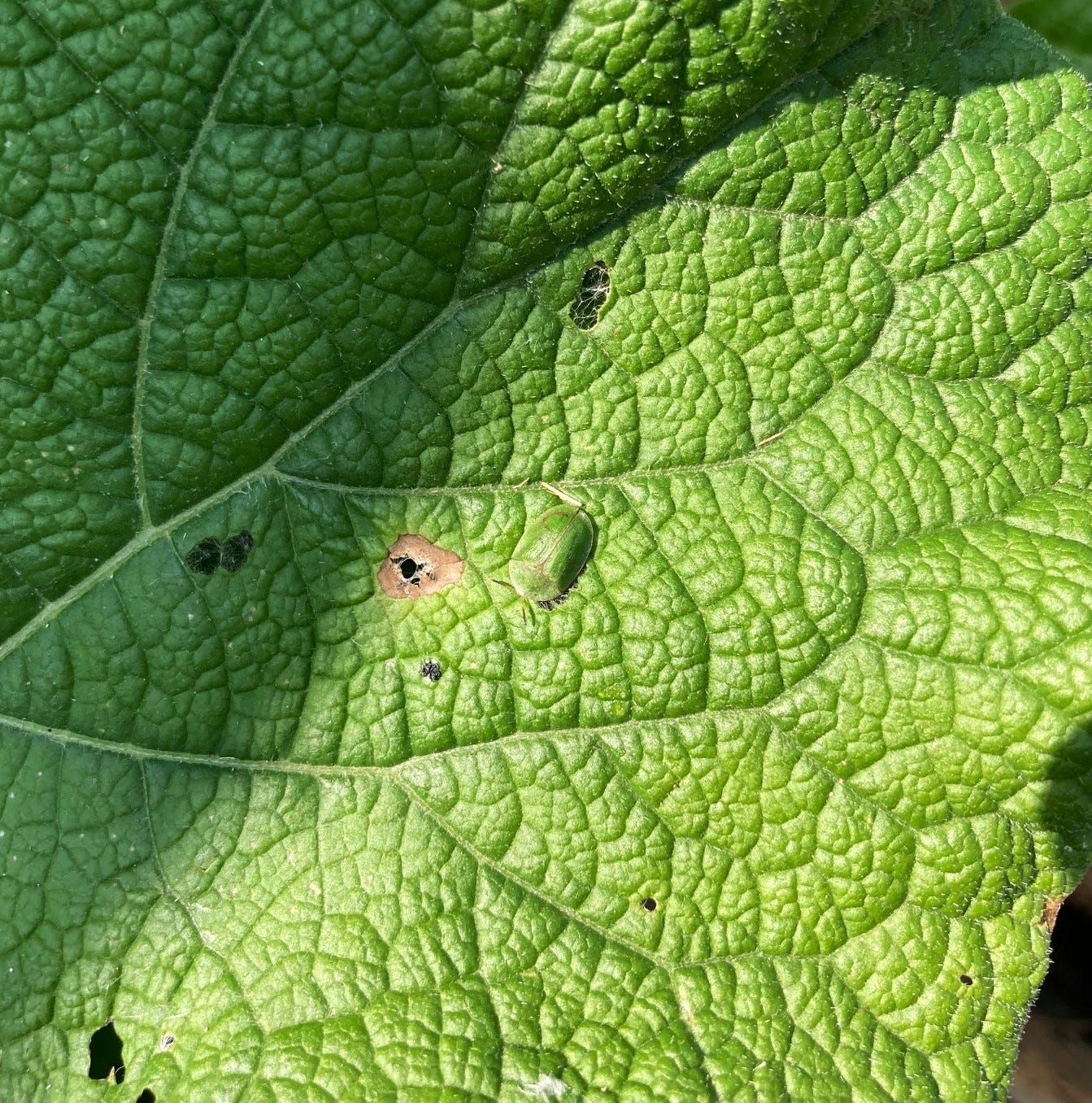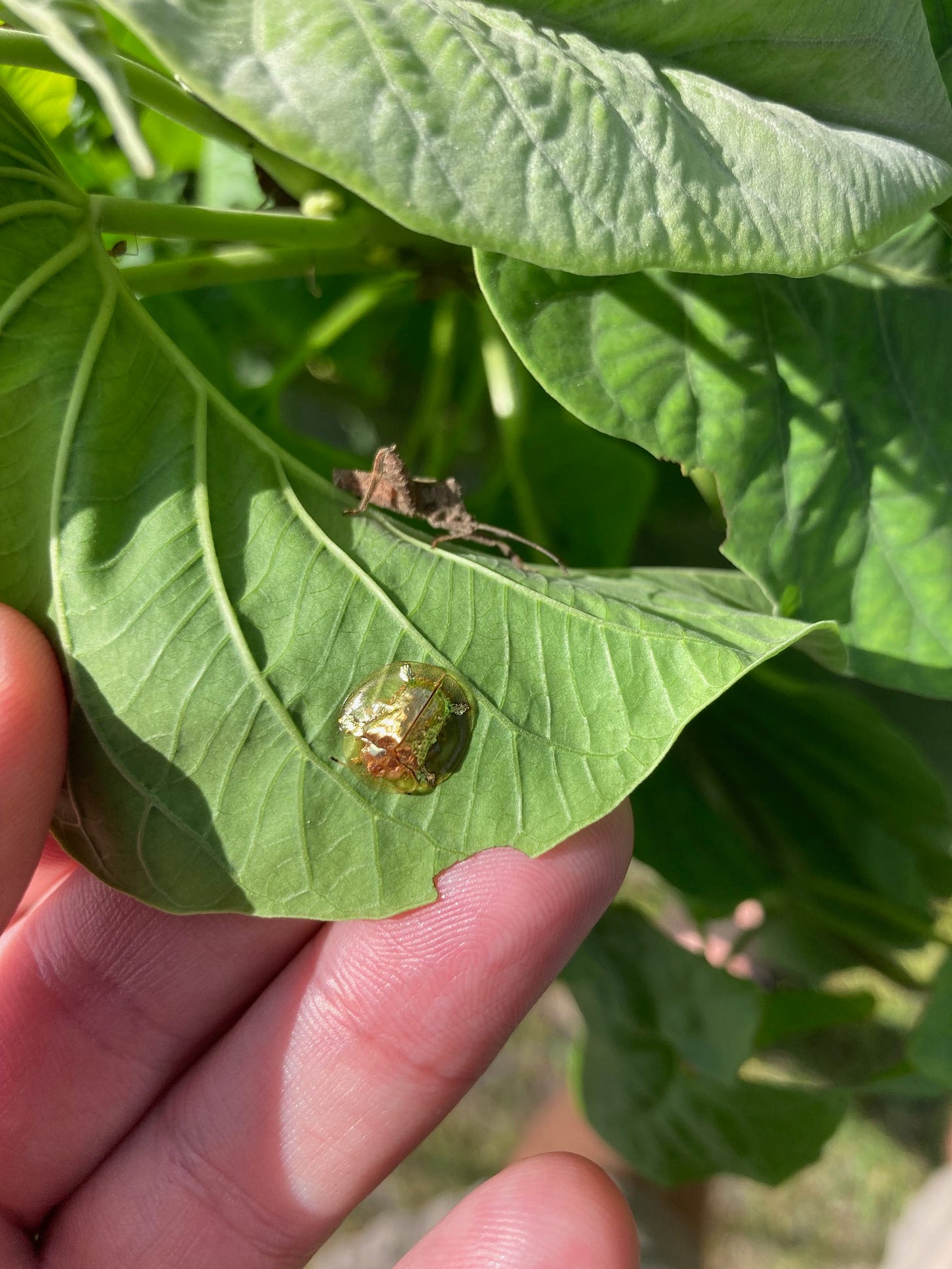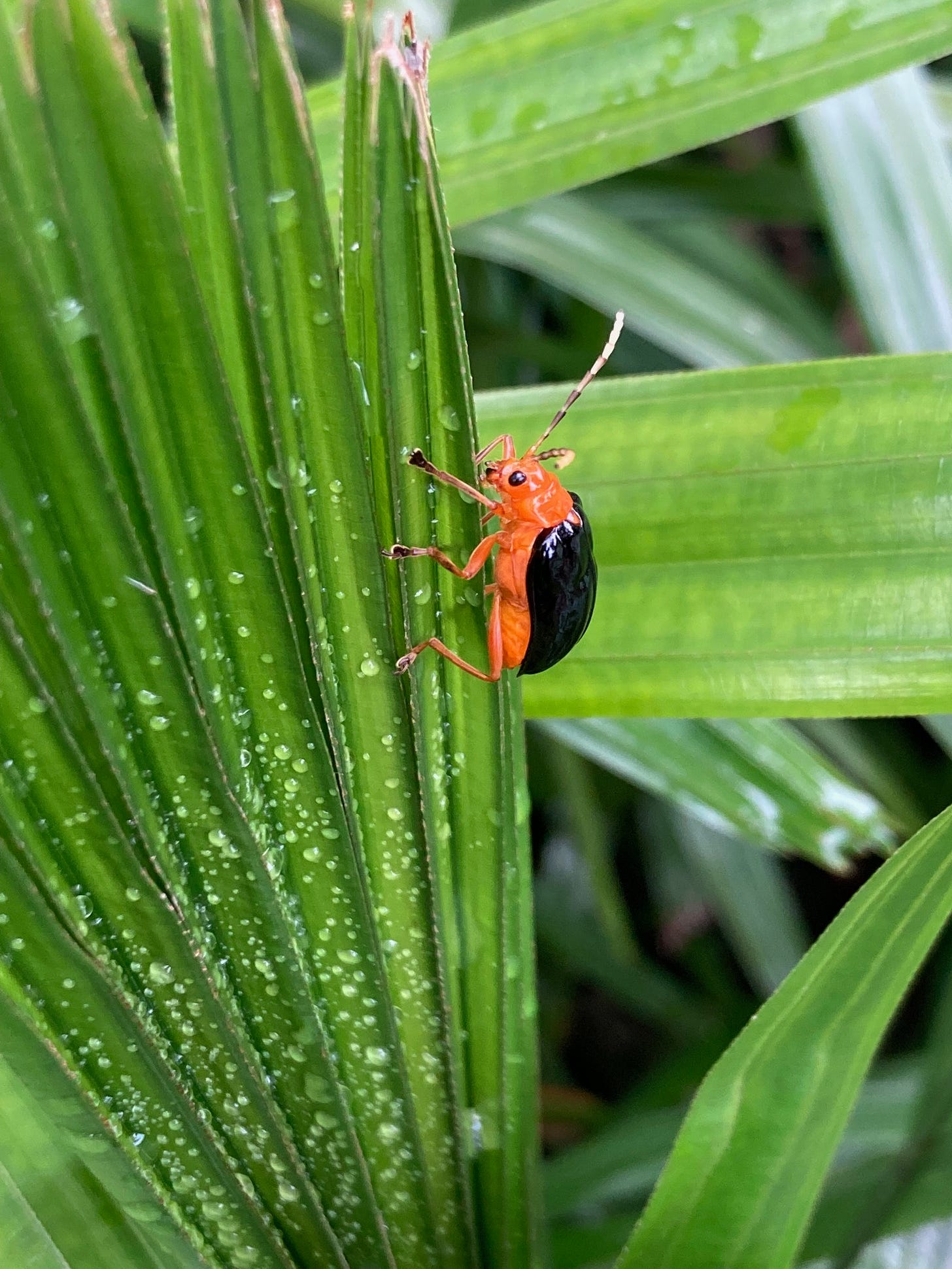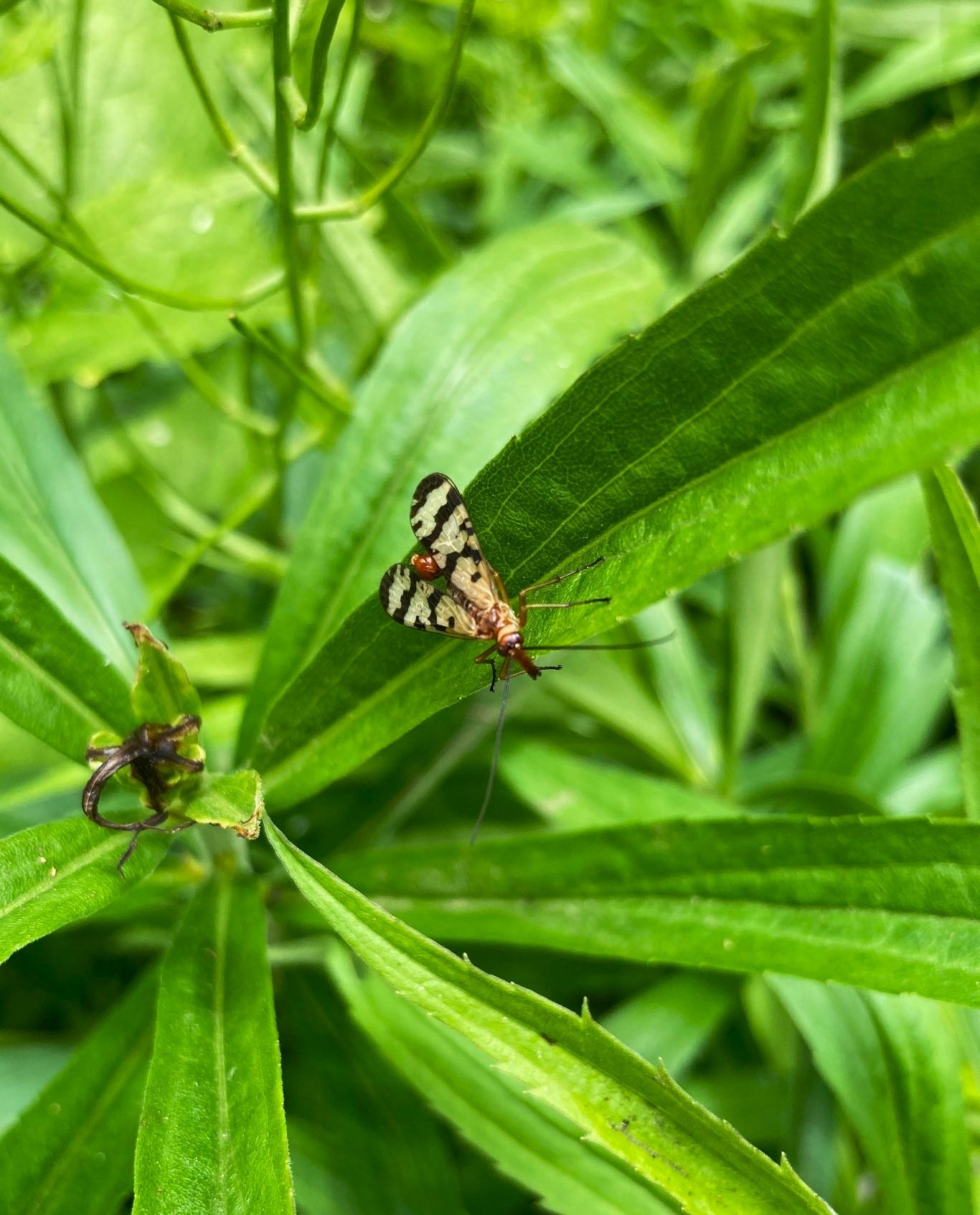
Few animals have perfected the art of camouflage as have the insects. For those species which live exposed on leaves and twigs, it is especially important. Birds, reptiles and spiders are on a constant search for food: a songbird like a wren or chickadee must catch hundreds of small animals in a day to feed itself and its chicks. For many insects, being well-hidden is an absolute matter of survival.
Pictured above is a Tortoise Beetle, part of the enormous family Chrysomelidae, the aptly named Leaf Beetles. Tortoise beetles live on the surface of leaves and feed by scraping away the outer layer of plant tissue, leaving characteristic markings on the leaf (this can be seen to the left of the beetle). When it senses danger, the beetle presses itself against the leaf and tucks its antennae under the thorax; the flattened edges of its shell make it hard for a hunting ant or assassin bug to reach the softer abdomen below.
The challenge of living directly on plants has propelled leaf beetles to the extremes of diversity- there are well over 30,000 described species, and at least as many unknown. There are so many it is unlikely we will ever know precisely how many species exist. They exploit nearly every part of plants- leaves, seeds, stems- with the exception of the woody tissues of trees: this they leave to their equally successful relatives the longhorn beetles. Some cause considerable damage to crops, particularly legumes and brassicas; the little shiny flea beetles that bite holes in your cabbage leaves belong here, as do the so-called ‘bean weevils’ that drill into peas. The incredible ecological success of flowering plants over the last 70 million years or so led to a concurrent radiation of plant feeding insects, so that now many plants have specialists from at least 5 insect orders feeding on them. Milkweeds, for example, are home to multiple species of butterflies, beetles and true bugs which live nowhere else.


But while some insects diversified into myriad uncountable forms, others stayed obscure. Long ago finding themselves perfectly adapted to the perfect circumstances, they remained relatively unchanged as the world changed around them.
Among the most intriguing of these relict insect taxa are the Mecoptera or ‘scorpionflies’, inhabitants of moist temperate forests in both the northern and southern hemispheres. The common name came about because the males of some species curl the tip of the abdomen up over the wings in a way that vaguely resembles the tail of a scorpion.

At first glance, scorpionflies rather resemble the bumbling, long legged craneflies (among the most archaic of the Diptera or true flies) that flutter around lights on spring evenings. This is no accident: they are close relatives of flies, from which they differ in the possession of two pairs of wings and typical chewing mouthparts.
Some species are wingless, and a few have the remarkable ability to live in snow, their bodies functioning perfectly at near freezing temperatures. In the cool, rainy Pacific Northwest of America, one species lives nowhere but in the miniature forests of moss that cover the trunks and branches of old maples and firs.
Despite having far fewer species than flies or beetles, Mecopterans and other ancient insects such as dobsonflies (Megaloptera) and stoneflies (Plecoptera) are, in their own way, highly successful. By specializing in stable environments that have lasted for eons, they have survived enormous upheavals in the earth’s history almost unchanged. Continents have shifted, animal dynasties have come and gone, but in the undergrowth of shady ravines and among the stones of mountain streams, these ‘old timers’ among insects have just kept on going. The cool, dark depths of the forests which once covered the Appalachians (oldest of the world’s mountains) and the ice-carved landscape of the Pacific Northwest are living reliquaries and museums of earth’s history. An hour walking along a rushing stream- whose voice is the same sound dinosaurs once heard- is like a journey back in time.





30,000 species of leaf beetle? Wow!